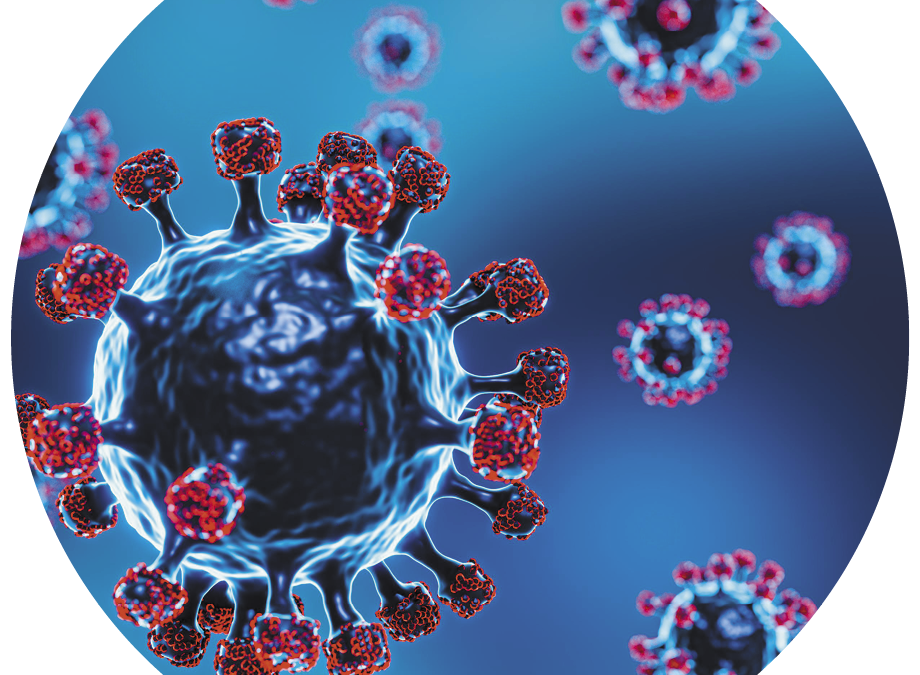
by IABA Team | Sep 27, 2021
The likelihood that a person with autism has another condition correlates strongly with the age at which they received their autism diagnosis, according to a new study. The study also noted that girls with autism are more likely than neurotypical girls to have other conditions, to a degree not seen in boys.
Study factors included whether a person with autism’s age at ASD diagnosis or birth sex changed their chance of having any of 11 common comorbid conditions (including epilepsy, anxiety, and ADHD). The study drew on data from around 16,000 people with autism and more than 650,000 neurotypical people up to 16 years old.
Among people included in the study who received late ASD diagnoses (11 to 15 years old) 26% of girls and 13% of boys were also diagnosed with a comorbid condition. The trend for intellectual disability in the study was the opposite with 40% of people with an early autism diagnosis having an intellectual disability, compared to just 10% percent of people with a late autism diagnosis.
Looking at Gender and ASD Comorbidities
For 11 co-occurring conditions considered by study researchers, the age of autism diagnosis was the single biggest predictor of whether a participant had that condition. Gender was another major factor.
Among individuals with autism, girls were 2.2X more likely to have anxiety than boys. By contrast, anxiety is about 1.4X higher in neurotypical girls than neurotypical boys. And while neurotypical boys are 2.6X more likely to have ADHD than neurotypical girls, the ratio dropped within the ASD population. Boys with Autism are just 1.6X more likely than girls with autism to have ADHD.
Looking at the ASD Spectrum Index
86 percent. That is the proportion of people with autism who show “a fair to very good level of objective psychosocial functioning,” according to a study that tracked the jobs. The happiness and close friendships of 917 adults — 425 men and 492 women — were tracked over a six-year period. These study results appeared in the journal Autism in June 2021.
The results of recent studies have started taking closer looks at both the age of ASD diagnoses and the gender of people with ASD. The early data shows promising results in the differences between boys and girls with ASD.
ABA Therapy from IABA Consultants
If you have questions regarding autism treatment, education, or plans using ABA therapy, we are here for you! Our goal is to make sure no family is turned away due to financial constraints. Our therapy team would love to talk to you. Find the location closest to you and give us a call. We’re here for you.
Sources
Spectrumnews.org, Community Letter
Journal of Autism & Developmental Disorders, July 2021
Acta Psychiatrica Scandinavica, July 2021
Health Services Research, July 2021

by IABA Team | Sep 20, 2021
People with autism aged 16 and younger and 40 to 60 have higher odds of being infected with COVID-19 than their neurotypical peers do, according to new studies. Researchers analyzed data from 16,406 people with autism in Israel’s largest healthcare organization. The team matched participants with a neurotypical person of the same age and gender.
The results show people with autism aged 16 and younger were 1.3X more likely to be infected with COVID-19. Participants with autism in the 40 to 60 age range had double the odds, the study noted. All results from this study appeared in the Journal of Autism and Developmental Disorders in July 2021.
“These findings suggest that people with autism or other neurodevelopmental disorders should be prioritized for vaccines,” said the lead medical researcher. “There is awareness towards the increased risk of morbidity among people with neurodevelopmental disorders, but I can’t really connect the link and say, ‘OK, they’ve taken our findings and turned it into a policy.’”
Research has just begun, which is why it’s uncertain why certain people with autism have elevated odds of contracting COVID-19. Researchers noted the differences seen in participants aged 40 to 60 could be associated with familial interactions, but there isn’t enough evidence yet.
ASD & COVID-19 Research Studies in the US
The number of autism-specific Medicaid waivers went up nearly 500% from 2004 to 2015, according to a new study. Many states use Medicaid waivers to provide services to people who may not be covered for ASD Services under Medicaid.
US researchers compiled a list of 269 different Medicaid programs focused on providing services to people with autism or intellectual disability. During this 11-year study, 26 states changed their Medicaid waivers to increase care options for people with autism. Nine states added a type of waiver called (waiver 1915C) specifically for people with autism, far outpacing new waivers for other types of intellectual disability.
“There’s a big difference in how states use Medicaid to meet the needs of people with autism throughout their life,” says Lindsay Shea, associate professor and director of the Policy and Analytics Center at the A.J. Drexel Autism Institute at Drexel University in Philadelphia.
ASD State Benefits
Three states researched in the study— Arizona, Rhode Island, and Vermont — do not offer any 1915C waivers, which was the main type of Medicaid program assessed in the study, thus they were not included in the study data. Arizona, Rhode Island, and Vermont use a different waiver, called a 1115, to provide long-term patient care.
Researchers also used data from autism prevalence studies to estimate the percentage of people with autism in each state who could potentially be served using 1915C waivers. The study estimated that Wisconsin could serve more than 20 percent of people with autism or intellectual disability through Waiver 1915C, while Minnesota could serve about 14 percent. For most states, the figure was far lower. The average state could serve an average of 4 percent of intellectually disabled residents or people with autism through Medicaid waivers.
ABA Therapy from IABA Consultants
If you have questions regarding autism treatment, education, or plans using ABA therapy, we are here for you! Our goal is to make sure no family is turned away due to financial constraints. Our therapy team would love to talk to you. Find the location closest to you and give us a call. We’re here for you.
Sources
Spectrumnews.org, Community Letter
Health Services Research, July 2021

by IABA Team | Aug 17, 2021
Going back to school is tough for most kids, but especially so for kids with ASD. The change of scenery & routine from summer break to a school setting can be tough. The COVID-19 pandemic has made things especially difficult, which affects kids who were used to digital or in-home learning during the last school year.
So, how can we make it easier for kids with ASD to transition back to an in-school environment? There are many things that can be done, so let’s take a look.
Develop a Plan with Your Child’s Therapist or Doctor
Developing a plan with your child’s therapist, doctor, or other healthcare providers can help children with ASD smoothly transition into a new school year. Putting a plan in motion with rules & methods that will be consistent in school, therapy, and at-home settings can make a world of difference.
Make sure to have a clear schedule complete with calendar dates so your child is aware of the coming changes. Talking with your child’s therapist or other healthcare providers can help you select the best way to count down to important milestone days on your calendar.
Make a List of Your Child’s Skills & Needs
Having a prepared list of your child’s skills and needs will make any discussions with teachers or administrators easier. Being able to quickly ask and answer questions will allow you to get a full picture of what your child will need to expect.
Be sure to list strengths, weaknesses, sensory issues, and any other important parts of your child’s ASD-specific behavior. Having a list of these issues will help you quickly and efficiently communicate the needs of your child. Talking to your child’s therapist or doctor can help you build a list that will be sure to mention any special needs.
Talk to a School or School District Administrator
Finding out how your child’s school or school district helps children with ASD is a huge priority for your back-to-school plans. Learning about the specific resources available for your child at school will help you make decisions about the school year.
Depending on the level of care your child needs, some school districts offer great special education programs geared towards kids with ASD. Sometimes different options are available for students with ASD, allowing parents to select the best option for their child.
This is just general information–every school district is different. To find out pertinent information for your situation, please contact the local school district. It may be wise to check out several surrounding school districts if you don’t like the programs from the district you live in.
Visit Back-to-School Settings Before School Starts
Taking your child to the school they will be attending early a few times may help them get used to the new setting. Walking through the hallways & classrooms, looking at the gyms & washrooms, and checking out the playground may help familiarize your child with the school. Try to get your child as comfortable as possible with the new school before the year starts.
An even better way to familiarize your child with their new setting is getting to meet their teachers several times before the school year. Getting to know the teacher or therapists at the school can help your child get comfortable with their new setting.
Re-Establish a School Schedule
It is very important to get your child back on a regular daily schedule before school starts. Establishing consistent bedtime and morning routines will help your child be ready for school. Starting this schedule a few weeks prior to school can help get your child on track for the school year.
Other scheduling issues may also be important. Here are a few examples of other scheduling things to keep in mind:
- Transportation times
- Eating times
- Nap times
- After school routines
- Weekend scheduling
- Any regular trips to therapy or the doctor
It is important to talk to your therapist or healthcare provider about weekend scheduling. Getting information about keeping the daily schedule on weekends or being a bit more flexible are questions you should find answers to.
Be sure to coordinate your schedule with the school (teacher, therapist, administrator, etc) to make sure your child stays on track.
Lastly, be sure to inform your child about any upcoming breaks, starting a few weeks before the break. Using a calendar or other time management system can help transition your child from regular school to break time more smoothly. Using social stories and visual aids on a calendar can help your child understand what’s on the horizon.
Establish an In-School Schedule
Working with your child’s teacher or therapist to implement a regular in-school schedule can help your child settle into a comfortable school year. Having daily school activities occur at the same time every day lets your child know what to expect each day. Working with your school or school district before the year starts to get a plan in place can help implement this strategy.
If your child has specific needs that revolve around a schedule, be sure to talk to the school, teacher, or therapist about how to tackle the issue. Having plans in place before something happens may help prevent difficult situations from arising.
Discuss Education Plans with Your Child’s Teacher
Most people won’t agree 100% on any school curriculum. This is especially true when it comes to education for children with ASD. You need to talk to your school or school district to see what kind of specialized education and methods will be used in your child’s classroom.
Don’t panic if you have minor disagreements with the teaching plan–sometimes it may be beneficial. We need to be clear though; if you think something sounds really wrong, be sure to call your child’s therapist or doctor and discuss the issue. It may be miscommunication but it may also be something that you should avoid. Talking to an expert on the issue can help you sort things out.
If your child has specific sensory issues, be sure that the teacher has a safe space to use in difficult situations. Having a place where your child can reacclimate at their own pace will help avoid specific situations. If your child has special needs for a safe space area be sure to discuss this with the teacher before the school year begins.
Try to Get Your Child Used to Social Situations
This information may not apply to every child; be sure to talk to your child’s therapist or doctor before planning anything.
Schools contain a lot of people in one building. Getting your child used to more people being around by taking trips to more populated areas or running errands to larger stores may help prepare your child for the transition to school. Situations with other people involved may help your child get used to many different people being around in their school.
Talk About COVID-19
The COVID-19 pandemic is still ongoing, and many schools have different rules when it comes to things like masks. If your child has sensory issues with wearing a mask or using sanitizer you need to talk to your child’s school and your therapist or doctor to develop a plan.
Learning about your school district’s health policies can give you the information you need to discuss masks, sanitizing, and other COVID-19-related issues. Special accommodations may be able to be put in place for your child’s needs.
Be sure to acclimate your child to any COVID-19 procedures that will be used at school prior to the school year starting.
Keep Communicating with Your Child’s School
It is extremely important to keep regular communications with your child’s teacher and anyone else regularly involved with your child. Hearing about your child’s progress, issues, and general behavior will allow you to evaluate any immediate needs as soon as they pop up.
Talking with your child’s therapist or other healthcare professional can help you put together a list of questions to ask for status reports. Having a consistent report can show how your child is progressing and behaving on a regular schedule.
Stay Interested & Involved
We want to finish up with the most important piece of information regarding transitioning a child with ASD back to school; Stay interested and involved. None of the things above will stick if your child isn’t receiving attention and care at home. Following a schedule and engaging in activities that are in place in therapy, at school, and, most importantly, at home can help your child maintain consistent behavior.
Showing interest in your child’s school activities and progress can help them progress even more than just setting a plan. Using visual aids, like a calendar with milestone stickers, may help your child understand the progress they are making in school.
Again, talk to your child’s therapist, doctor, or other healthcare professionals to find the best way to stay engaged with your child’s education. Every child is different. Be sure your child is getting the best care they can by staying involved.
ABA Therapy from IABA Consultants
If you have questions regarding autism treatment, education, or plans using ABA therapy, we are here for you! Our goal is to make sure no family is turned away due to financial constraints. Our therapy team would love to talk to you. Find the location closest to you and give us a call. We’re here for you.
Sources
Helping Kids with Autism Transition Back to In-Person School, UC Davis
Back to School: 17 Tips to Help, Autism Speaks
Preparing for Back to School, Autism Speaks
Students with Autism, publicservicedegrees.org
COVID Autism Back to School Transition, Stonybrook Medicine

by IABA Team | Aug 17, 2021
Early social skills are emerging as one reliable indicator of ASD. Some research suggests that children who lack social gestures are likely to have pronounced autism traits later on and follow a lower skill trajectory.
In a 2017 study of 199 autistic toddlers and preschoolers, researchers found that the children who made few social-communicative gestures, such as pointing and imitating adults, had more severe autism traits a year later. The research showed these social behaviors predicted autism severity better than repetitive behaviors or living skills.
Conversely, children whose autism traits diminish tend to be relatively social early on. A 2020 study looked at toddlers who sought out social interactions and showed good pointing skills (to indicate objects) who ended up with only mild autism traits as adolescents.
Early Intellectual Abilities & Disabilities
Early intellectual ability can be another early indicator of ASD. In one study, autistic children who had intellectual disability (defined as having an IQ below 70) as toddlers were likely to show substantial difficulties both socially and academically through the age of 14.
On the other hand, children who show a substantial easing of autism traits and advances in life skills tend to be those without intellectual disability, experts say.
Adaptive Behaviors
Adaptive behaviors can also correlate with future academic success. A 2020 study had researchers analyzing records for 98 autistic adults from a study in which clinicians had evaluated daily living and other skills from ages 2 to 26. Using modeling software, the researchers divided the participants into two groups; those with low- and high-daily living skills.
Children in the high-skills group were more likely than those in the low-skills group to continue their education after high school, according to the research.
Socioeconomic Status
Socioeconomic status can be an early indicator of ASD, too. Low-income and minority children with autism tend to have less developed communication and adaptive skills in young adulthood than autistic children from more privileged backgrounds, according to a 2019 report.
Low-income children may have minimal exposure to early intervention programs to address speech, motor, and other difficulties. Family participation in these programs predicts “longer-term outcomes” during adolescence and adulthood.
Genetic Indicators
Many recent studies on genetics may also provide clues to a child’s future. About one-quarter of children with autism have a genetic variant linked to autism. Some of these may give rise to characteristic developmental paths. Data from a 2020 study looked at 65 people with an ASD-linked variant, aged 5 to 21.
The scientists assessed each person’s skill level and combined those data with families’ recollections about when these children had hit early milestones such as walking and talking. The team found that the children’s developmental course depended on the genetic variant they carry.
Children with an ADNP variant show significant motor delays almost across the board, generally not walking until 20 months or later. However, the earlier they do walk, the higher their scores on nonverbal IQ tests in childhood (ages 4 to 16) and young adulthood. In children with a CHD8 variant, early milestones do not predict their cognitive development as reliably. But the earlier they speak in phrases (whether at age 1 or 4, for example) the better their adaptive skills are likely to be in later childhood and young adulthood.
Research is still being conducted and analyzed on the relationship between genes and ASD.
ABA Therapy from IABA Consultants
If you have questions regarding autism treatment with ABA therapy, we are here for you! Our goal is to make sure no family is turned away due to financial constraints. Our therapy team would love to talk to you. Find the location closest to you and give us a call. We’re here for you.
Sources
Mapping the Futures of Autistic Children, spectrumnews.org

by IABA Team | Jul 21, 2021
We know that finding good resources to help understand and learn about autism can be hard to find. There aren’t a lot of comprehensive resources on the internet, which can make it difficult to get information without consulting a professional. But what if you want to do a bit of research before contacting a therapist, doctor, or other Autism Spectrum Disorder (ASD) professional?
Thankfully there are some great resources available on the web if you know where to look. We put together a list of some of the best ASD resources on the web so you can start your research by going to the site with the best information for your specific needs.
Each of the following resources will be classified by a category to make it easier for you to find what you need. The ASD categories we will be using are general information, screening & testing, pediatric ASD resources, teen ASD resources, and important links.
We will provide information and brief summaries on each resource so you’ll have an idea of what information the site provides before going in. Feel free to skip to the category you are looking for information on; this article doesn’t necessarily need to be read from start to finish. That being said, the general information links are great resources for most ASD-related topics and questions.
General ASD Resources
These resources provide general ASD information and can be thought of as overviews. The sites in this section will focus on ASD as a whole; symptoms, when to test, where to go, options, FAQs, and other broad ASD-related information.
CDC ASD Information
CDC ASD Information & Resources
The CDC ASD is probably the best place to start for general information and answers to your questions. The information provided by the CDC is one of the most comprehensive ASD resources on the internet.
Topics the CDC provides information on include:
- What is ASD?
- ASD screening & diagnosis
- Treatments
- Research & tracking
- Data & statistics
- ASD-related articles
- Materials & multimedia
- Community reports
There is information on just about every general ASD-related topic available on the CDC website. Starting your journey here will give you a great general overview about what ASD is and what you can do to help.
Autism Speaks
Autism Speaks Website
Autism Speaks has some great information on what ASD is and provides resources & articles on many broad topics. The CDC provides a link to the Autism Speaks website, as it goes more in-depth on more specific ASD topics like finding therapy or treatment in your area, associated symptoms, screening, and fundraising.
Autism Speaks has been the target of some criticism due to their former goal of ‘curing’ autism. Their focus has shifted over the years, however, and their website remains a great resource for getting information and promoting awareness about ASD.
ASD Screening & Testing Resources
Screening & testing is the most important step in diagnosing ASD. The resources in this section provide lists, links, and more that can help you find ASD screening and testing in your area. The first section, CDC screening & diagnosis, goes over what to expect and how to prepare for an ASD screening.
CDC Autism Screening & Testing
CDC ASD Screening & Testing
The CDC page on ASD screening & testing is the best place to learn about general practices and procedures. The information provided by the CDC on this page is a generalized overview, but it has enough information to get you started on where to look and what to look for.
The Autism Community in Action Finding a Doctor
TACA Finding an ASD Doctor
This link starts with a more in-depth look at what to expect during ASD screening & testing followed by several links to help find a doctor in your area. The focus of this page is providing information that will help you get the treatment you are looking for.
The TACA Finding a Doctor page does a great job of explaining what you should look for and what to avoid when selecting an ASD doctor. Further information includes how to avoid getting stuck with unpaid costs from your insurance company and resources to help with this.
This is a fantastic resource if you are unfamiliar with billing practices related to ASD therapy or treatment. The links provided to find a doctor or, specifically, a functional medicine doctor can also help you to start your journey on the right path.
Pediatric ASD Resources
Autism therapy is commonly associated with children, as early childhood is the best time to diagnose and start treatment for ASD. Many of the ASD resources available on the internet focus primarily on childhood ASD and available treatments. We wanted to share a few of the more comprehensive options available if you are starting your search for pediatric ASD information.
Healthline Autism Doctors
Healthline Doctors Who Specialize in Autism
This short article contains a list of all the questions you should ask your child’s doctor about ASD and related treatments. The article gives a list of screenings & tests your doctor may use to determine if ASD is a concern.
While this article is short it is still a fantastic resource for parents who want to know more about how doctors diagnose ASD. The questions and lists provided in this article will help you prepare for what to ask your doctor and what you should expect during an ASD screening.
Verywell Health Developmental-Behavioral Pediatricians
Verywell Health Developmental-Behavioral Pediatricians Article
Like the Healthline link above, the Verywell Health Developmental-Behavioral Pediatricians article provides a short but informative look into ASD pediatricians.
Developmental-Behavioral Pediatricians (DBPs) are board-accredited pediatricians that have specialty training and certification that can help diagnose ASD. DBPs are some of the most experienced pediatricians when it comes to diagnosing and developing a treatment plan for ASD.
This article does a great job outlining the differences between a DBP and a traditional pediatrician, as well as where to find a trusted DBP in your area.
Official Journal of the American Academy of Pediatrics: ASD
AAP Identification, Evaluation, & Management of Children with ASD
This is a dense article written by several doctors for a medical journal. This bold warning is not meant to turn you away from this resource–just that it is a lot of information on one page.
Written in 2020, this AAP journal provides a comprehensive look into what ASD is, how it is identified & evaluated, and how to manage it. The information provided goes over many topics and is a great modern look into how doctors look at ASD and how they recommend managing it.
This journal can be downloaded as a PDF for easier reading, as the journal itself may be hard to navigate on a mobile phone.
Recommended reading if you really want to get insight into current medical information on ASD.
Teen ASD Resources
Information on ASD in teens and young adults can be more difficult to find than its pediatric counterpart. The two links in this section represent great places to start if you are looking for ASD information focused specifically on teens and/or young adults.
CDC ASD in Teens and Young Adults
CDC Teens & Young Adults with ASD
The shortest of our CDC links, this page is a brief overview of ASD in teens and young adults. Information on this page includes the difficulties teens and young adults with ASD may encounter and how to help. There are several links to help you get started on finding help and other resources for teen & young adult ASD.
SAP Counseling for Teens and Young Adults with ASD
SAP Teens & Young Adults with ASD
We wanted to include this counseling resource for teens and young adults with ASD. Teens and young adults have different things to worry about than children and this article takes an in-depth look at counseling and therapy. Teens and young adults with ASD may have difficulties adapting socially and this article gives information, options, and resources to help with this.
ASD Resource Links
The last section of this article will provide several large lists of ASD resources. These links will provide you with a great list of resources to get you started on finding the ASD information you are looking for.
CDC ASD Links
CDC ASD Links & Resources
This list from the CDC provides links to some important ASD resources on the web. The links lead to sites that talk about everything from diagnosis to finding treatment in your area. Each link has a description explaining what the linked site specializes in.
Reading Rockets Top Autism Organizations & Resources
Reading Rockets Top ASD Resources
This is a great list of ASD resources from a site focused primarily on encouraging children to read. The links on the Reading Rockets list include general information, articles for professionals, and financial aid information. A great resource from an unexpected source; all the links have descriptions about what they are about.
ABA Therapy from IABA Consultants
The information provided above is subject to change and the links are not owned by or associated with Instructional ABA consultants. If you have any questions, comments, or concerns about the above links, please let us know! Likewise, if you have any great ASD resources that we are missing, send them our way–we want to provide information and starting points for everyone who needs help with ASD.
If you have questions regarding autism treatment with ABA therapy, we are here for you! Our goal is to make sure no family is turned away due to financial constraints. Our therapy team would love to talk to you. Find the location closest to you and give us a call. We’re here for you.






